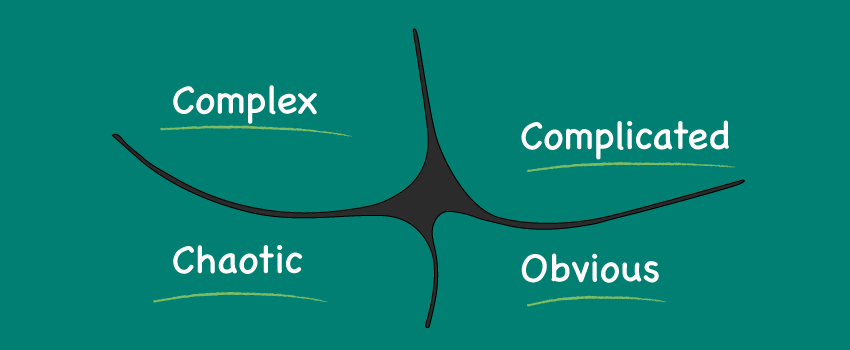
Developing a Winning IT Strategy
If you consistently say the words “strategy” and “strategic,” this means that you sound smart, right? Oh my. If I had a dollar for every time that I heard someone say “strategic” along with some abstracted, wishy-washy, ambiguous, fluffy statement around it, well I’d not be writing this blog right now. Cue beaches and cocktails, and the millionaire lifestyle.
Sadly, the word “strategy,” or “strategic,” is in my opinion often misunderstood, misused, and I’d go so far as to say abused! In a world full of acronyms and abstractions, it’s easy to get confused, especially when your board requests that you go off and develop a strategy.
To help, I thought I’d write about some of the challenges I’ve seen (with strategy) and how these can be combated. So, first things first, let’s try to see what this strategy business is all about before we all run off to an ivory tower, locked away “strategizing.” (Pro tip: don’t do this – isolation does not help strategy.)
What’s the purpose of IT strategy?
An IT strategy should set out a vision for the future, and a direction of travel – to help guide and steer decision making that will enable business outcomes supported through technology. It should consider the business’ demands, how IT will govern strategic execution, and how IT services can be supplied to meet the business’ needs.
I’ve listed some simple points in the table below (please notice that I said “simple,” a common theme you’ll see here is that we need to communicate simply without ignoring the underlying complexity.)
| Where are we today? | Where do we want to be? | How are we going to get there? |
|
|
|
So quite simply, the IT strategy should explain the:
- Why
- What
- Who
- When
- Where
Fail to plan, plan to fail
So now that we’ve an understanding of what we’re creating and why we’re creating it, we need to plan our strategic development approach. This isn’t prescriptive, but I’d suggest that the following phases and activities should suit general use cases:
| Plan | Discover | Analyze and envision | Playback, agree, execute |
|
|
|
|
Reasons why strategic initiatives or strategic planning often fail
To help organizations to create winning positions through technology requires more than just knowledge of technological wizardry and magic, in fact that’s not really the part that I see organizations go wrong with.
Instead, understanding the business, involving the right stakeholders, and effectively communicating are key factors that help to create a winning position.
However, first we should look at what we know doesn’t work!
There’s a whole load of freely-available information on this but, for this article, I’m going to pick just two sources and use the summary points.
- Having a plan simply for plans sake
- Not understanding the environment or focusing on results
- Partial commitment
- Not having the right people involved
- Writing the plan and putting it on the shelf
- Unwillingness or inability to change
- Having the wrong people in leadership positions
- Ignoring marketplace reality, facts, and assumptions
- No accountability or follow through
- Unrealistic goals or lack of focus and resources.
- Unrealistic goals or lack of focus and resources
- Plans are overly complex
- Financial estimates are significantly inaccurate
- Plans are based on insufficient data
- Inflexible/undefined team roles and responsibilities
- Staffing requirements are not fully understood
- Project scope inflexible to changes
(You can click through on either or both of the links to find more detail.)
Now if you’re like me, these points should resonate a lot, scarily so! So, what can we do about this?
It can be tempting to run off into a meeting room, to bring in lots of your colleagues, and to come up with a lofty vision and then to create a strategy that may have some of the key ingredients (but is still missing some key areas). The reality is that creating a winning strategy requires more than a workshop or two – it requires a scientific, data-driven approach.
It’s simply not enough to just call out the direction of travel without understanding why you’re moving in that direction, what the future needs to deliver, the resources you require to deliver the outcome, and how the building blocks need to be arranged to create a platform for the business to achieve on.
Now, we should have an overall plan for how we’re going to develop a strategy, we know what we need to avoid doing wrong (i.e. avoiding the mistakes listed above), so we should probably start to think about what the end results need to look like.
The reality is that creating a winning strategy requires more than a workshop or two – it requires a scientific, data-driven approach. Share on XWhat should be in an IT strategy?
There’s no wrong or right IT strategy formula. However, in my experience, good IT strategies have certain characteristics, and I’ve tried to summarize these below:
- They describe the business demand
- They describe the current state, the challenges of the current state, and the rationale as to why these need to be overcome
- They provide guiding principles
- They describe the target state and provide a series of actions that will be taken to reach the target based on a recognition of the current-state position (i.e. ensuring that the transition from current to future state is based on a solid understanding of the current position, its complexities, and the resources it would require to change it)
- They’re data driven, and by this, I mean that they consider the realities of the current-state landscape, the market forces, and take a level of pragmatism
- They’re specific and relevant to the business contexts they support
- They provide a financial plan as to how the benefits they promise will be realized
- They’re developed with the people who will execute activity against the strategic aims
- They should guide and help the organization from a daily perspective (principles play a big part in this)
If I was a strategy, then what would I look like?
Now I’m not saying that this template will be right for everyone, but since I’m trying to avoid over-abstraction, and I’m hoping to make things simpler, I’m going to list the section headings that may be useful when thinking about a strategy document:
- Executive Summary
- Business Context
- Today’s Challenges
- IT Vision for the Future
- The Benefits
- The Transition Plans
- IT Governance
- Metrics and Measurements
- IT Principles
- Financial Plan Summary
- IT Service Portfolio Summary
- IT Architecture Summary
- IT Organization
- IT Partners and Suppliers
I’m also a fan of creating a supporting set of posters and potentially (dare I say it) a PowerPoint deck.
For the posters, I tend to look at creating a series of four that summarize key points that are relevant and specific for your business as follows:
- Current State
- Future State
- Transition Plan
- Benefits
For a PowerPoint deck, I’d generally aim for no more than 10 slides which enable IT leadership to communicate the key elements of the strategy, focusing on clear messaging.
Conclusions
IT strategy activities need to provide a business benefit, and the IT strategy should be a weapon that can be wielded by both the business and the IT department to aid decision making – to ensure that there’s a clear understanding on the direction of travel and the principles which IT is operating to. These need to be supported by pragmatic and actionable plans, which have a solid business foundation (they should also be achievable within the constraints of the business). In this way, we give the business and IT a fighting chance of making the right technology investments to support the business in its ventures.
What would you add to the above to aid others with their strategic planning efforts? Please let me know in the comments.






